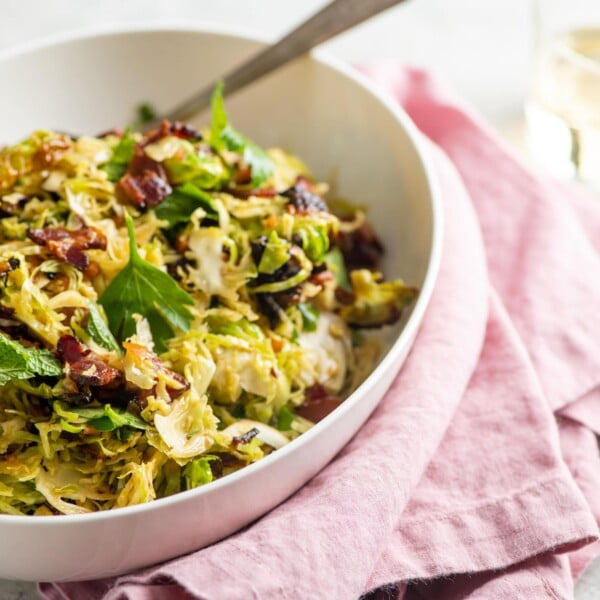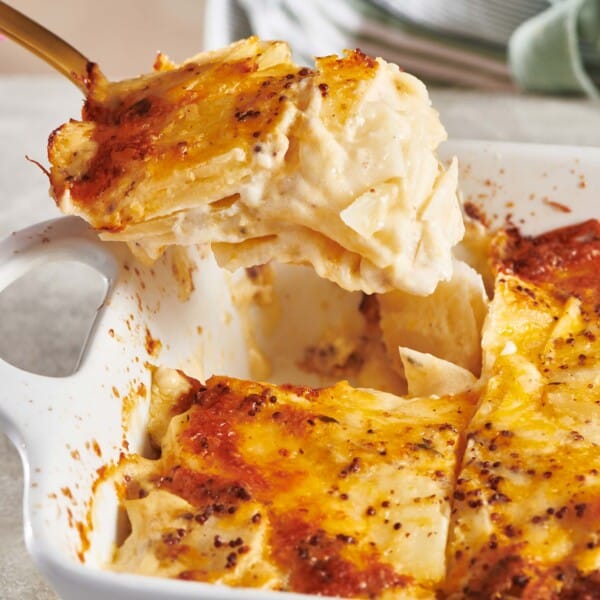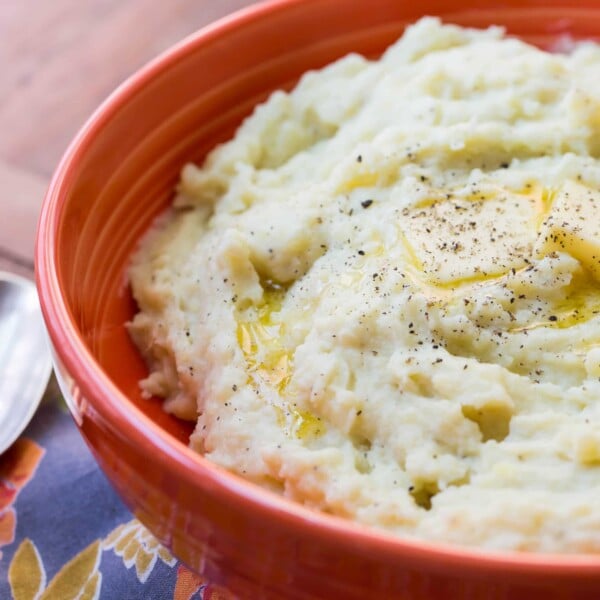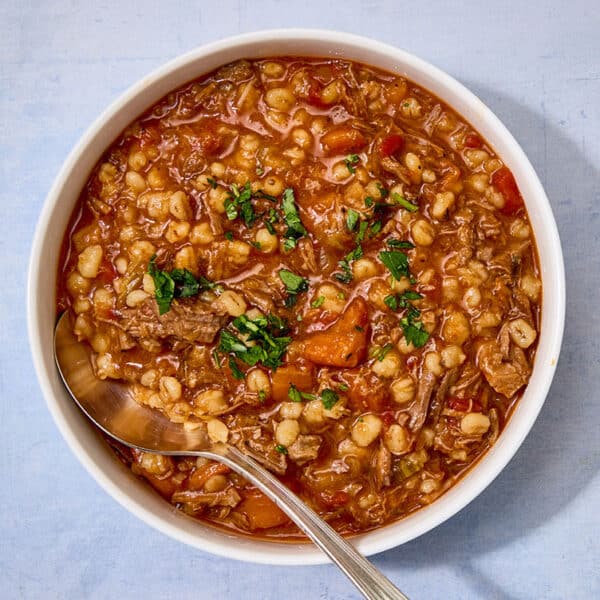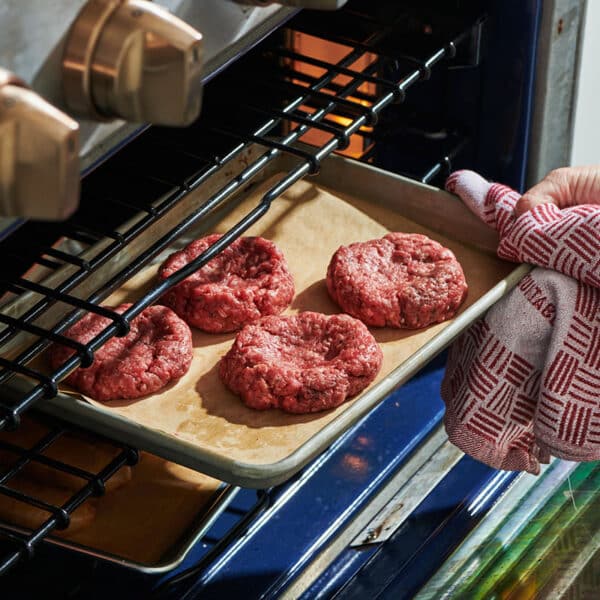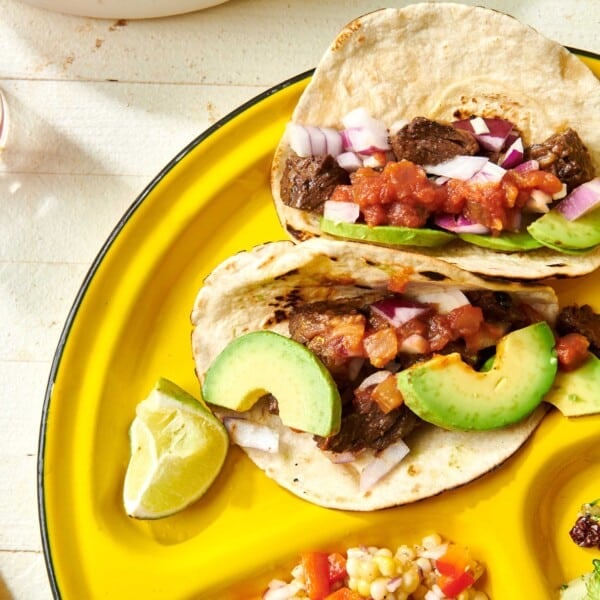Beef Tenderloin Roast
on Dec 20, 2020, Updated May 15, 2025
This post may contain affiliate links. Please read our disclosure policy.
Learn how to cook the most tender cut of beef tenderloin to perfection (and top it with a pat of herby compound butter for the ultimate luxury).
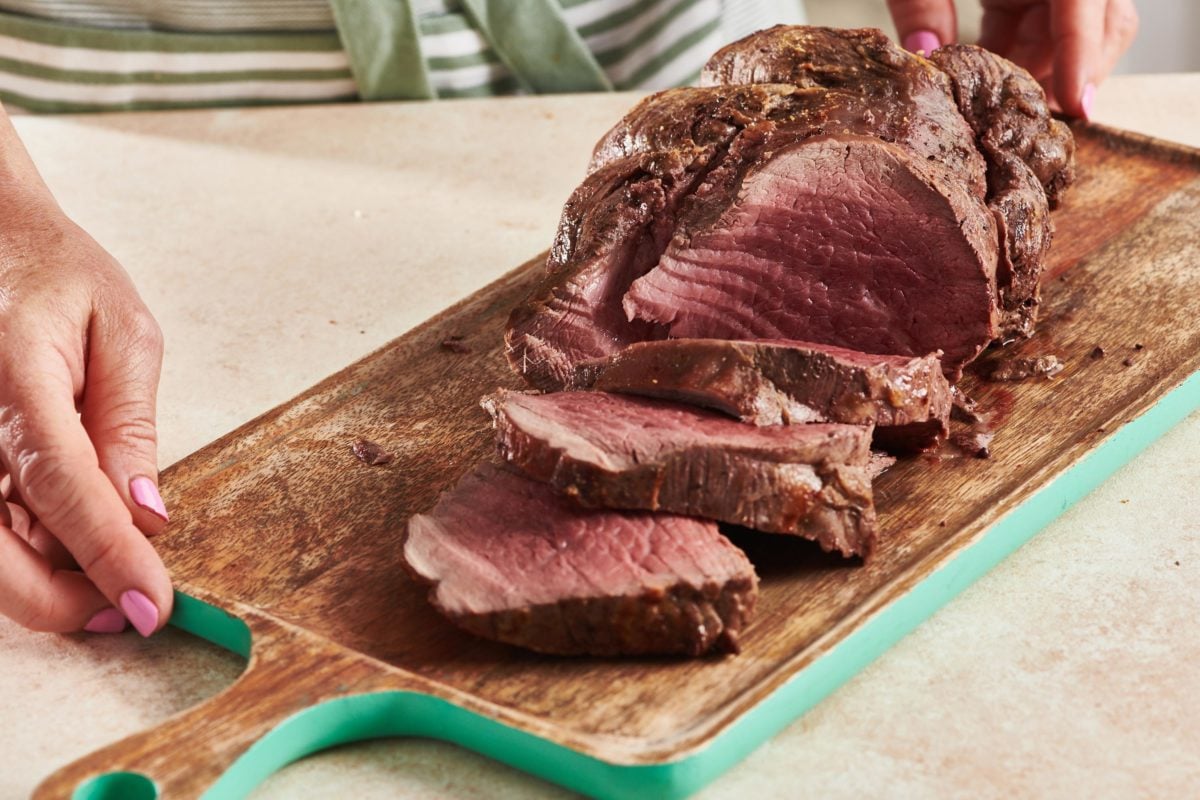
Are you ready for a splurge? A beef dinner for the ages? If so, you are ready for a beef tenderloin. It’s the ultimate meat eaters holiday entrée, a main dish that says right away that there is something to celebrate. And when cooked properly, you can slice it with a butter knife — it’s that tender!
The compound butter melts right into the warm beef, making every tender bite infinitely richer and more flavorful. This roast pairs well with a wintry Brussels Sprouts, Pecorino, and Apple Salad or Roasted Cauliflower and Carrots with Olive Drizzle. And a big bowl of mashed potatoes would not be out of place. Start the meal with a bowl of Hot Crab Dip for a decadent meal.
By signing up, you agree to our Privacy Policy.
What's In This Post?
- What Is Beef Tenderloin?
- The Best Way to Cook a Filet of Beef
- Beef Tenderloin Ingredients
- How to Make Beef Tenderloin Roast
- How to Tie Beef Tenderloin
- FAQs
- Cooking Time for Beef Tenderloin Roast
- Resting Beef Tenderloin
- Beef Tenderloin Temperature and Doneness
- What to Serve With Beef Tenderloin Roast
- More Beef Tenderloin Recipes
- Beef Tenderloin Roast Recipe
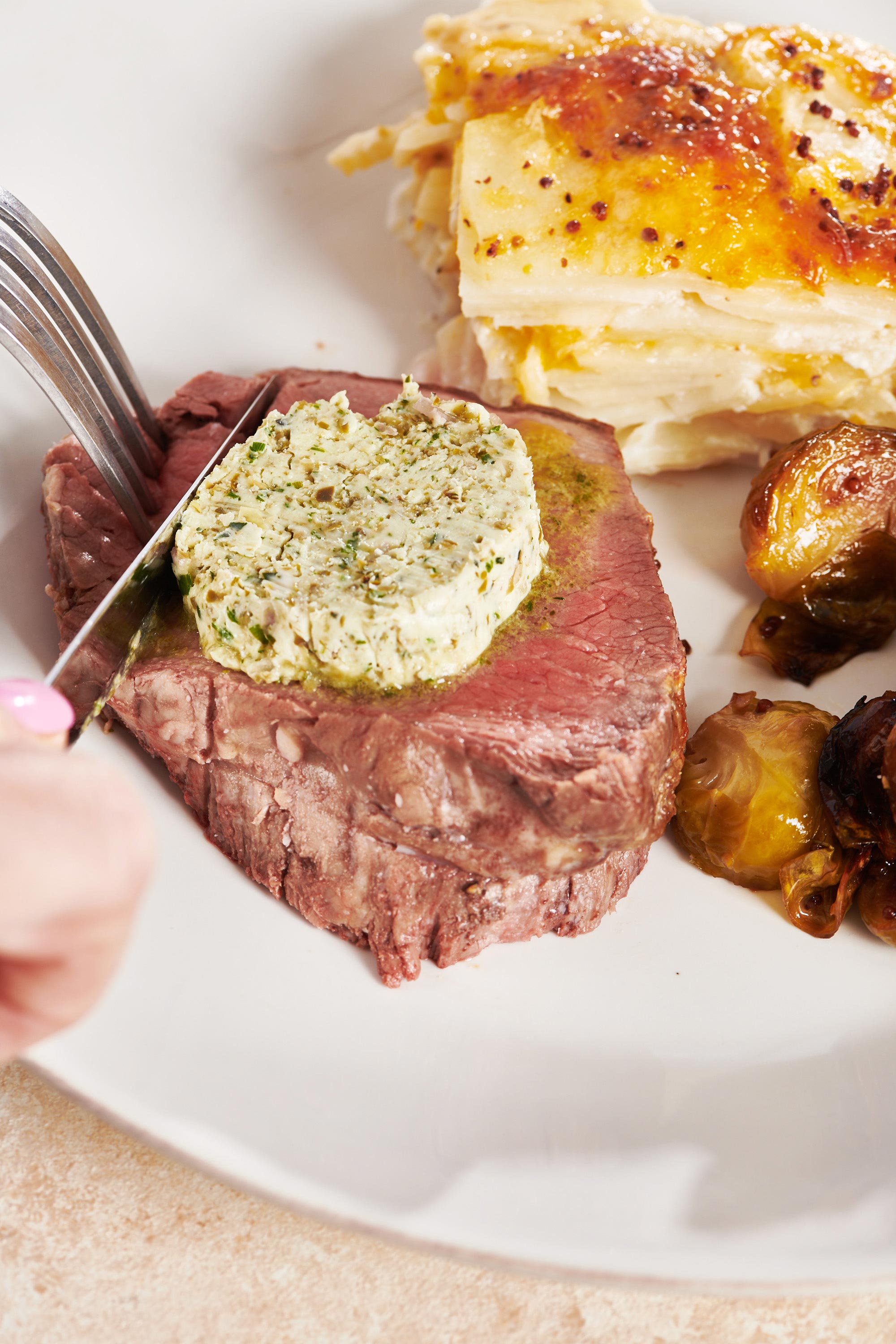
Beef Tenderloin: Juicy, tender, and luxurious. How to cook the most tender cut of beef to perfection.
What Is Beef Tenderloin?
A beef tenderloin, or filet of beef, usually comes from the short loin. The muscle gets very little use and so has less connective tissue. Tenderloin, as the name suggests, is very tender, probably the most tender cut of beef. This cut of beef is also sometimes called chateaubriand, filet of beef, or tenderloin roast.
Several steaks are actually cut from this region, including the filet mignon, chateaubriand steaks (steaks cut from the larger portion of the tenderloin), and tournedos (steaks cut from the smaller end of the tenderloin).
Whole tenderloins may be sold with the connective tissue still attached (“unpeeled”) or with the connective tissue and any excess fat removed (“peeled”). As you might imagine, the peeled or trimmed tenderloins are more expensive than the unpeeled. Yet, they require very little preparation work from the cook, so the extra dollars may be worth it (you are clearly already splurging).
You may also buy different pre-cut steaks cut from the tenderloin, such as filet mignon and tournedos. Since this is an expensive cut of meat, to begin with, it is worth going to a butcher, or at least a market with a meat department, to make sure you are getting what you are paying for.
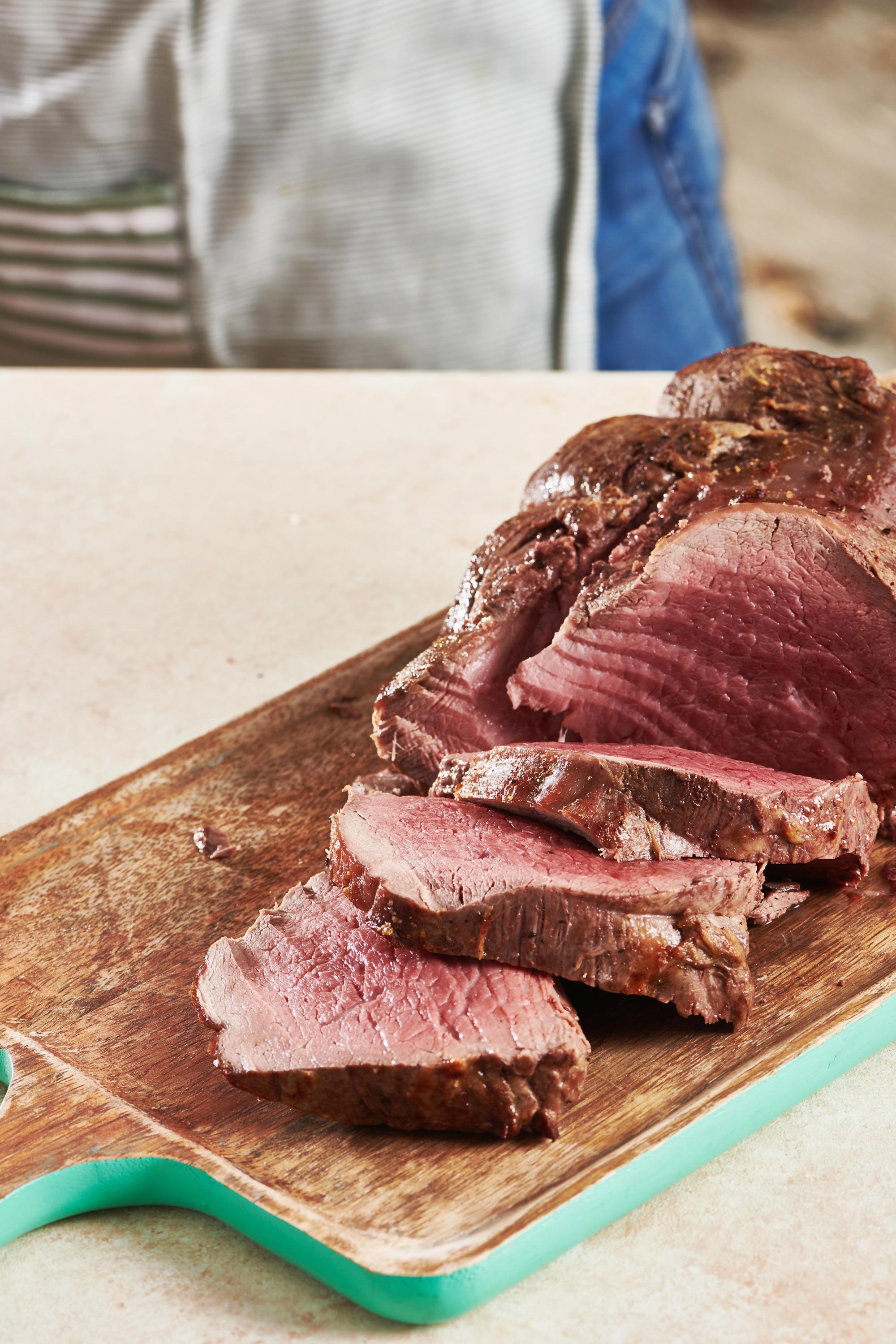
The Best Way to Cook a Filet of Beef
Roasting and grilling are two of the best ways to cook a filet of beef. Roasting is a dry-heat method of cooking that usually involves higher heat, and it works best for roasting tender cuts of meat. Grilling is great in the warmer weather.
One roasting method is to roast at a constant temperature all the way through. The timing is longer if the roasting temperature is on the lower side and (as stands to reason) shorter with a higher cooking temperature.
Another popular roasting technique is to start with very high heat and then lower it for the second part of the cooking time. This helps seal the roast and form a crust but leaves the inside juicy and pink. Sometimes, the meat is seared before it goes into the oven, regardless of the oven temp. This helps activate the browning. If you want to dig into this, Serious Eats has an excellent explanation of the Maillard reaction.
Different chefs swear by their methods, but truly, any of these methods can work. You must pay attention to the internal temperature of the meat and take it out precisely when it reaches your desired temperature. If the recipe gives explicit instructions (as it should), then follow them for the best results.
Beef Tenderloin Ingredients
While it seems like an extravagant dish, this beef tenderloin recipe doesn’t require many ingredients.
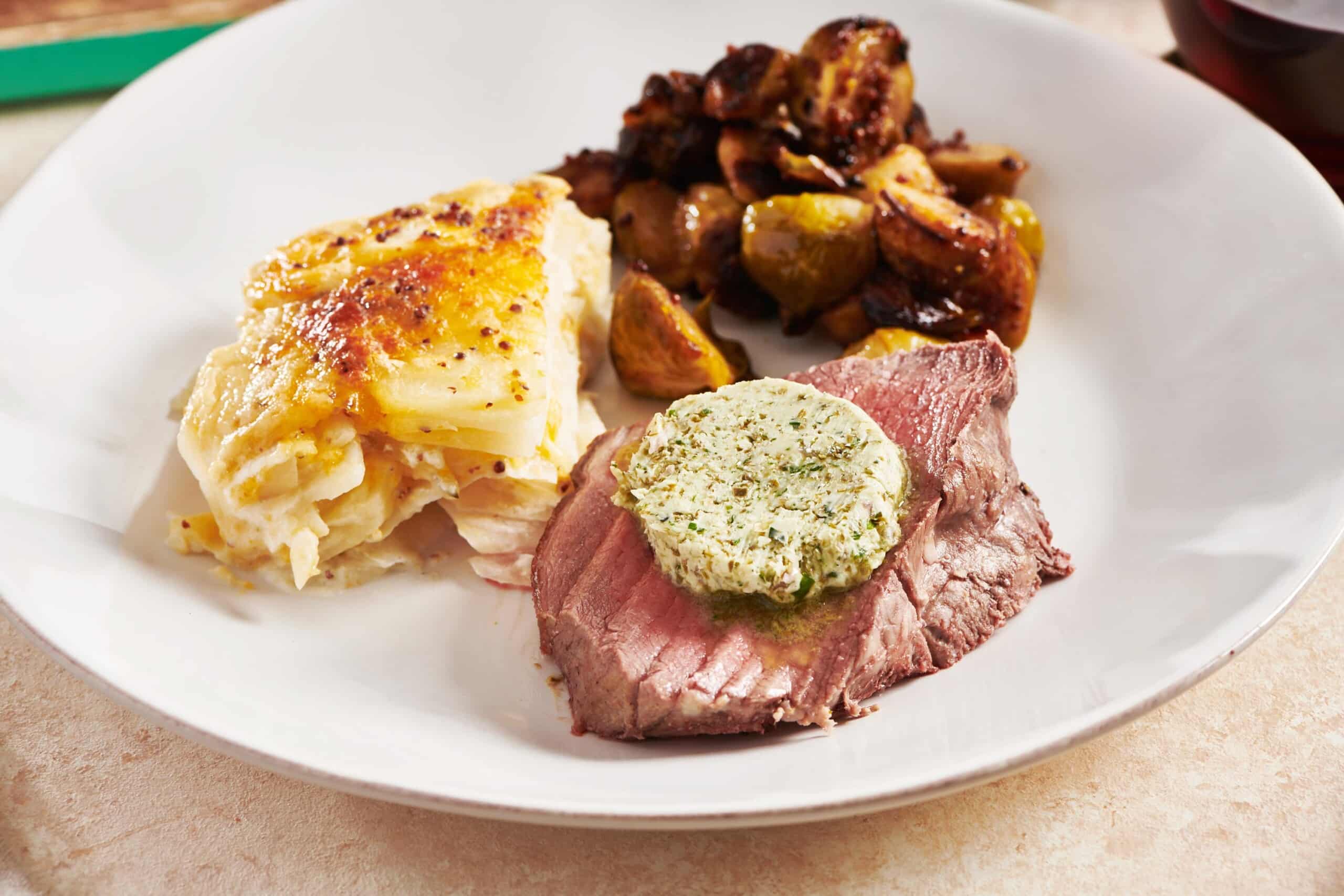
For the Tarragon Caper Compound Butter:
- Capers – Make sure to dry the capers off before adding them, as too much liquid could prevent the compound butter from setting in the fridge.
- Shallot – Cooking with shallots adds sweetness and a bite.
- Chives – Don’t worry about chopping the herbs too finely, as they will get chopped in the food processor as well.
- Tarragon – The perfect citrusy herb to go with this rich butter.
- Unsalted butter – Start with room temperature butter so it is easy to mix together. The compound butter will be refrigerated after making it.
- Freshly ground pepper
For the beef tenderloin:
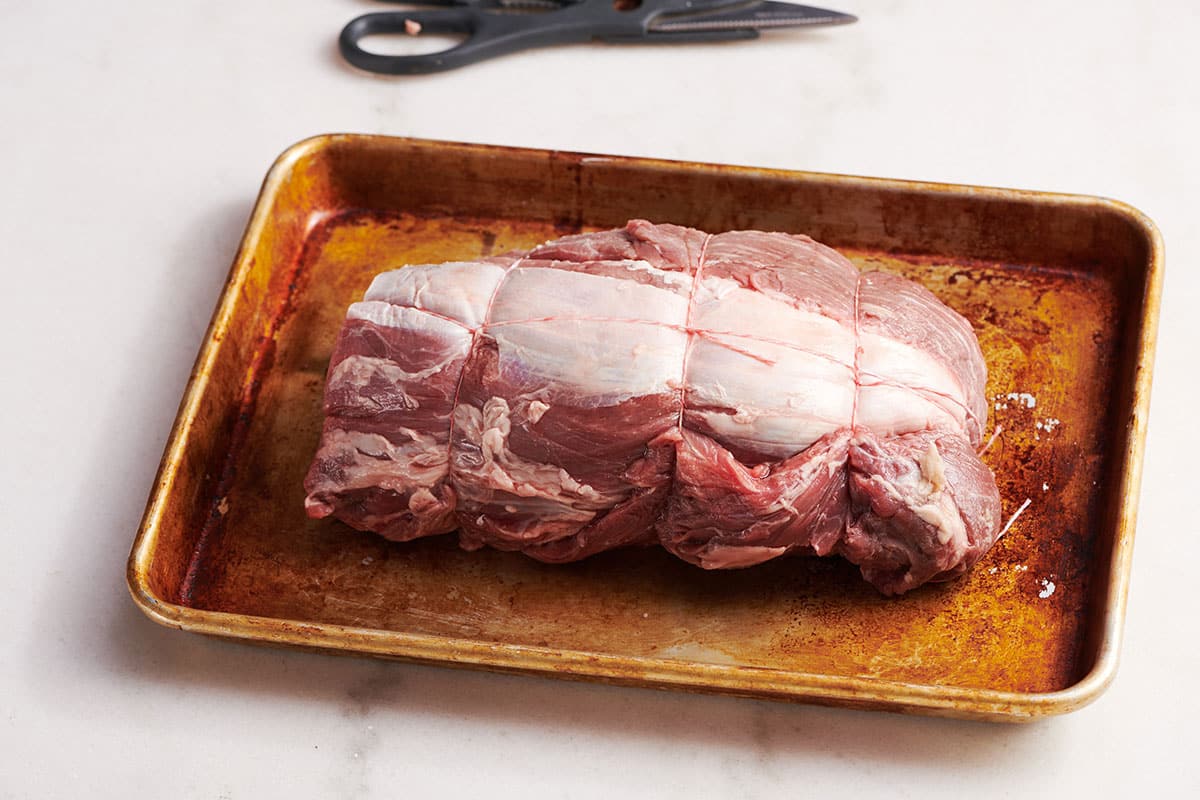
- Beef tenderloin – Ask your butcher to tie your beef tenderloin, or see below for instructions to do it yourself. This will help it cook evenly.
- Unsalted butter – Rubbing the beef with butter before roasting will help it develop a crust, as well as add to its richness.
- Kosher salt and freshly ground black pepper– Salting and peppering the beef generously brings out its natural savory flavors. Freshly grinding the pepper provides little chunky, spicy peppercorns on the crust.
How to Make Beef Tenderloin Roast
- Make the compound butter: Combine the capers, shallot, herbs, and butter in a food processor and blend until combined. Dump it out onto a piece of plastic wrap, wrap it up, and roll it into a log. Refrigerate.
- Prepare to cook: While the oven preheats, pat the beef dry and rub it with butter. Season it generously.
- Roast: Roast the beef in the oven for 23 to 30 minutes. Then, remove it from the oven and tent it with foil. Rest for 20 minutes.
- Serve: Slice the meat (thick or thin, your choice). Place a slice of compound butter on top of the warm beef tenderloin slices to serve.
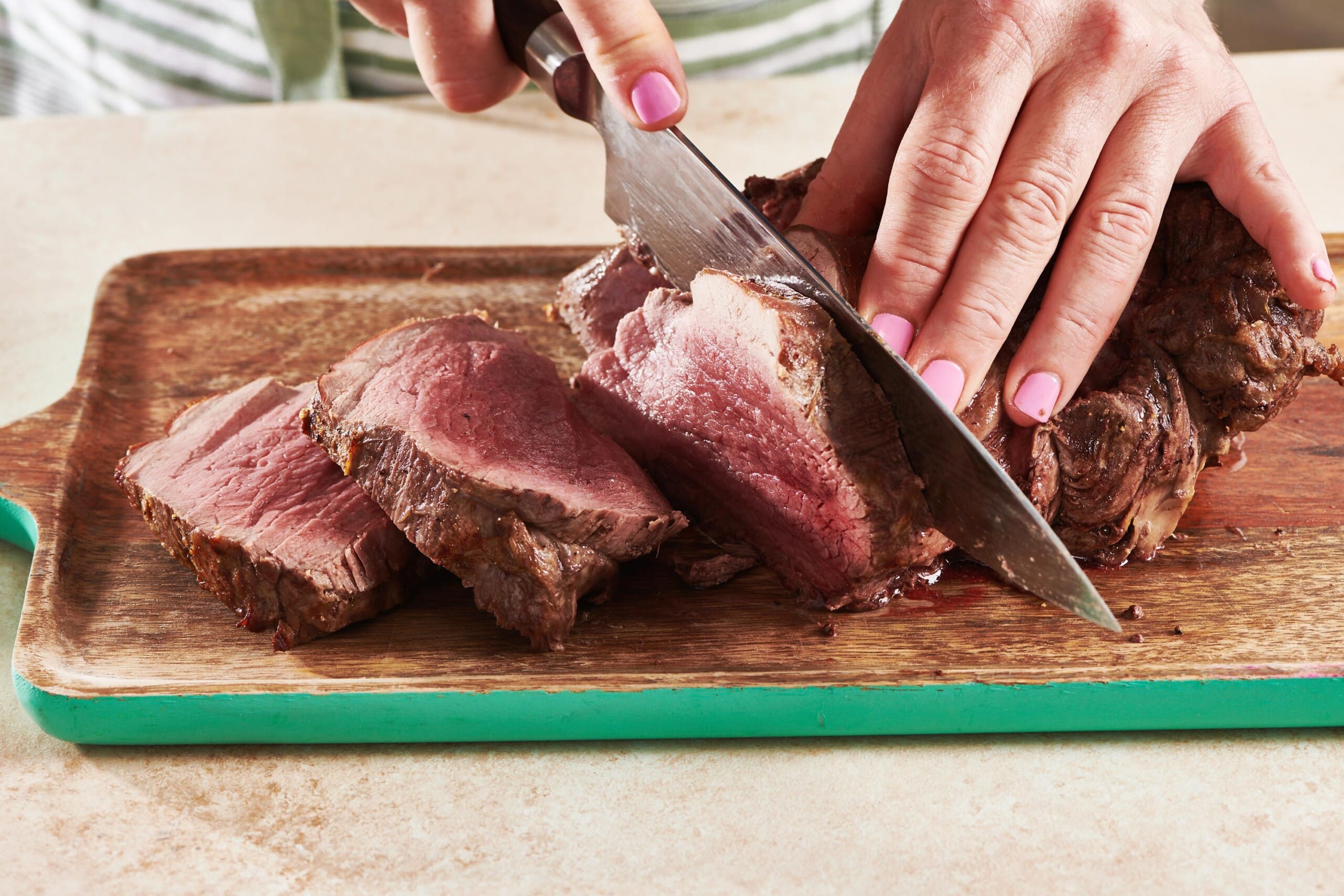
How to Tie Beef Tenderloin
If your butcher didn’t truss the tenderloin for you, it’s easy to do it yourself; all you need is some kitchen twine.
- Place several pieces of twine about 12 inches long across a baking sheet or cutting board with about 2 inches between each piece.
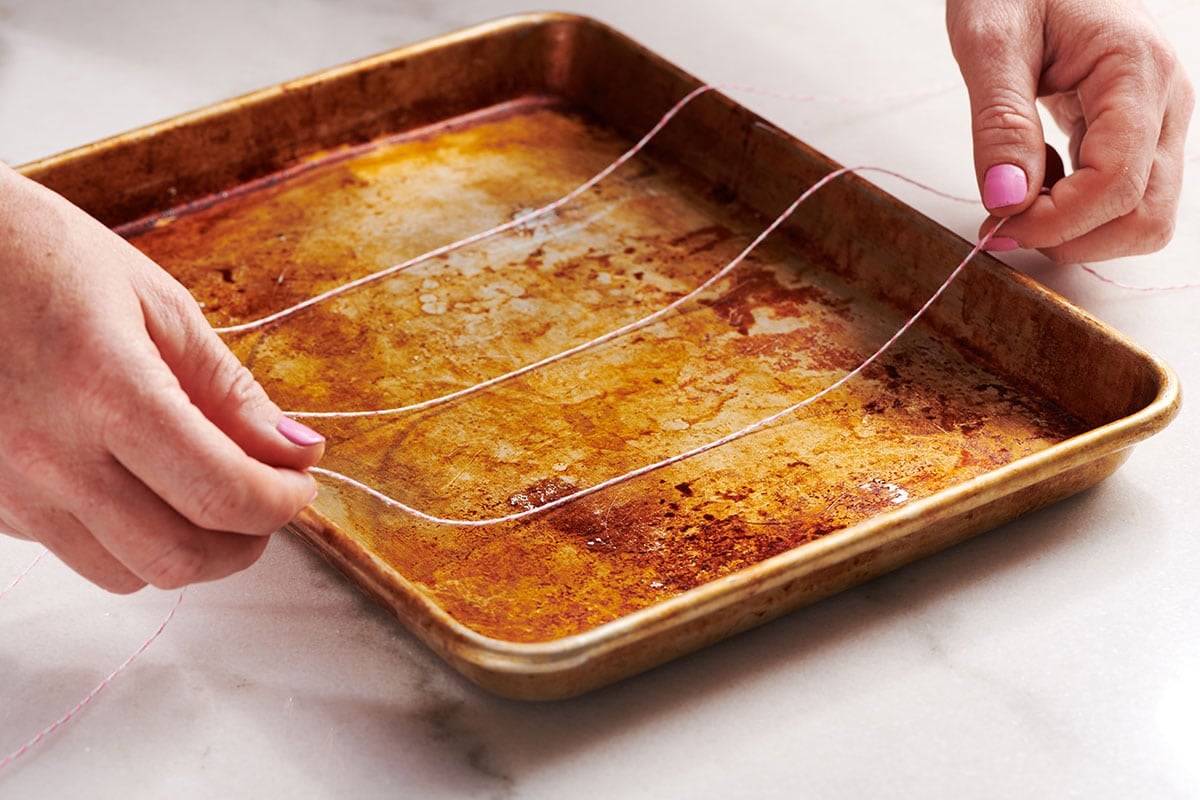
- Tuck the tail end of the tenderloin several inches underneath the roast to create a more even shape.
- Tie the twine around the tenderloin at about 2-inch intervals.
Kitchen Smarts
Make sure the twine is snug but not too tight – you don’t want the meat to bulge out from beneath the string, which would result in an uneven roast.
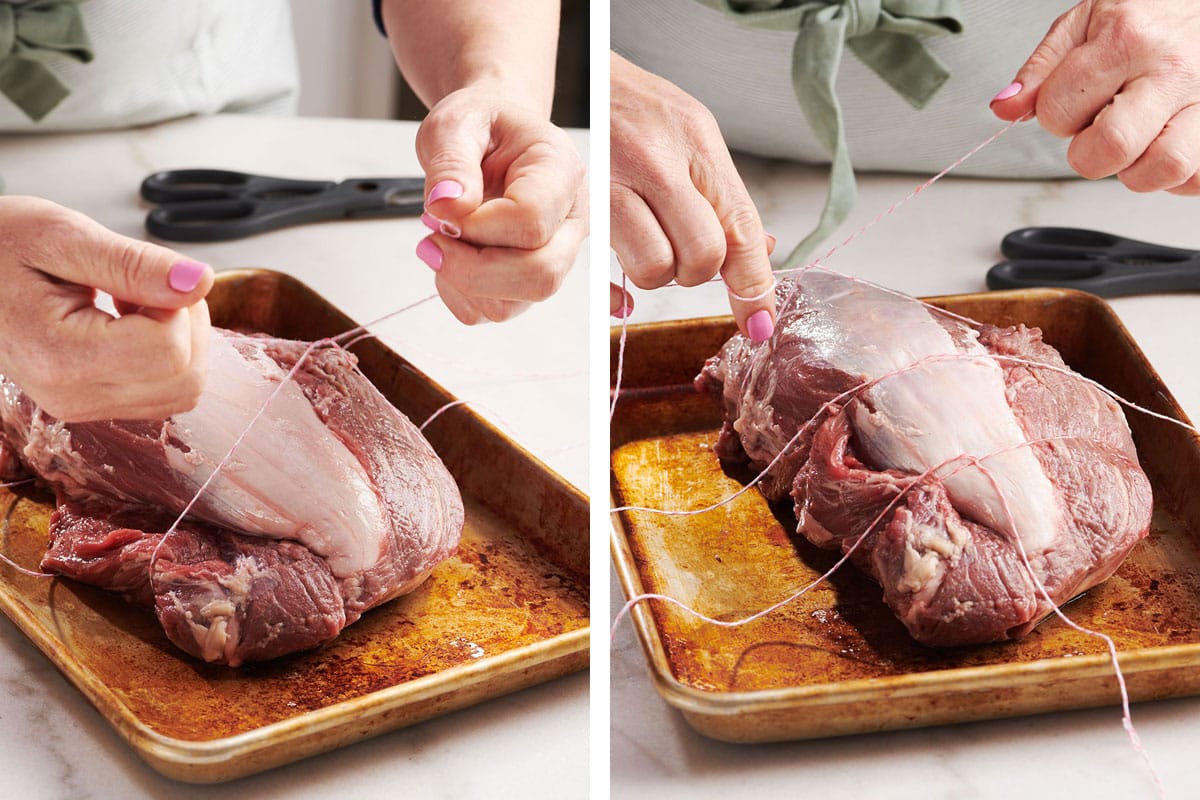
- To truss the ends of the tenderloin for a neater, more even shape, take another piece of twine, about 3 times the length of the tied tenderloin, and weave it under and around the various pieces of twine, circling the circumference of the meat. Looping it around the twine encircling the beef will help keep it stable. Make sure to run it through the twine on both the top and the bottom of the roast.

- Tie the ends snugly. Make sure the strings are neat, and the knots are trimmed.
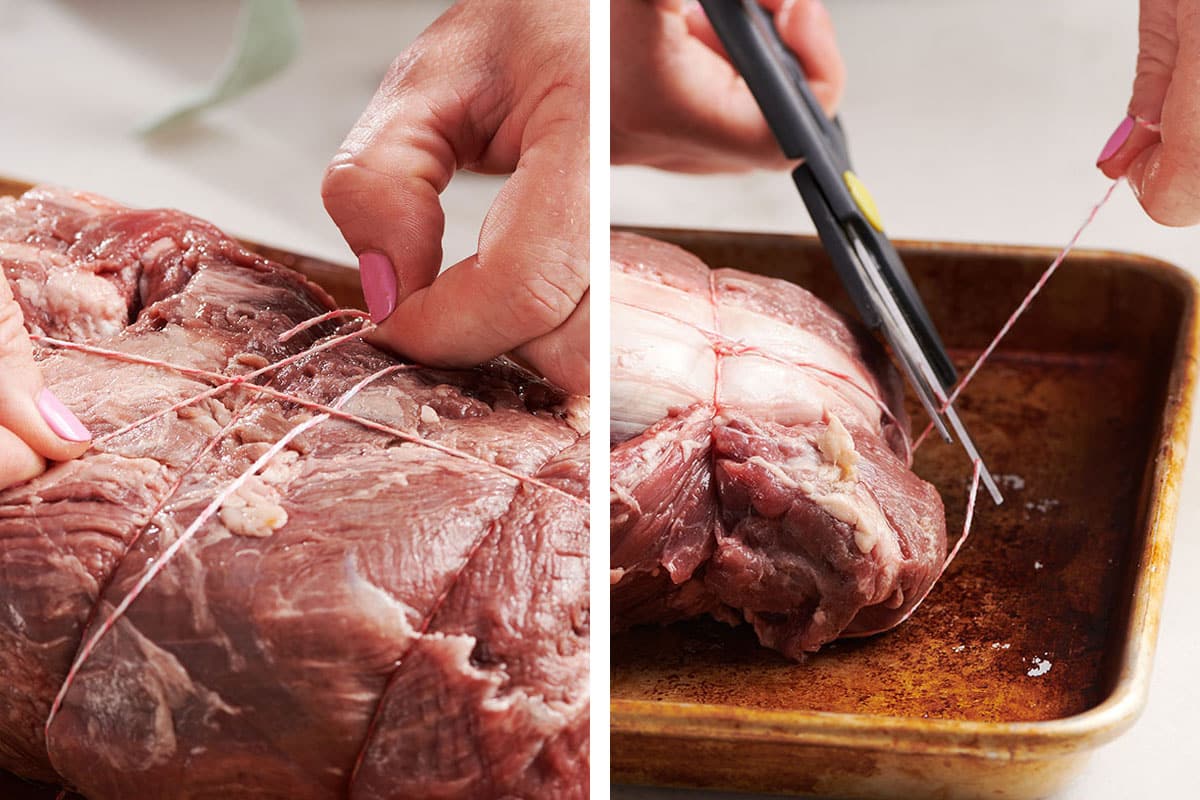
FAQs
Compound butter is softened butter that has been blended with other ingredients and seasonings. It can be sweet or savory, and this savory version is a flavorful mixture of capers, shallots, chives, and tarragon. When you place a small pat of the butter atop a slice of warm meat, it melts in a sultry way over the beef, adding even more richness and flavor.
Compound butter will last in the fridge for a week. You can also freeze compound butter for up to a month.
The key to keeping beef tenderloin moist is to cook it at the right temperature and not for too long. The cut is tender on its own, so all it needs is a very quick roasting for 23 to 30 minutes at 475 degrees. This will sear the outside without drying out the center. I also like to add to the beef’s natural richness and juiciness by rubbing the outside with butter before cooking.
Cooking Time for Beef Tenderloin Roast
The cooking time will vary according more to the thickness of the filet than the length or even the weight. It is really smart to have a meat thermometer when you are cooking meat, especially an expensive cut like this. It should take about 25 minutes, depending on the thickness and the accuracy of your oven. It’s also worth checking to see if your oven is running hot or cool before roasting this pricy cut.
Resting Beef Tenderloin
This bears repeating: all meat needs to rest after leaving the heat. A just-right resting time means that your meat will still be warm but also juicy and tender.
Here’s the scientific skinny on why meat needs to rest. As the proteins heat up while the meat is cooking, they coagulate, meaning they uncoil and bond with one another. The liquid that was held within these coils then starts to be released and move toward the center of the roast (or whatever piece of meat you are cooking). Then, when the meat comes out of the oven, as it cools, the liquids are able to be reabsorbed by the protein molecules as they change yet again.
So don’t be tempted to slice into that filet as soon as you pull it from the oven; let it rest for 10 to 20 minutes. You’ll want to take it out just before it’s done to your liking, as the 10- to 20-minute resting period will also allow the temperature to rise a bit before plateauing and then cooling.
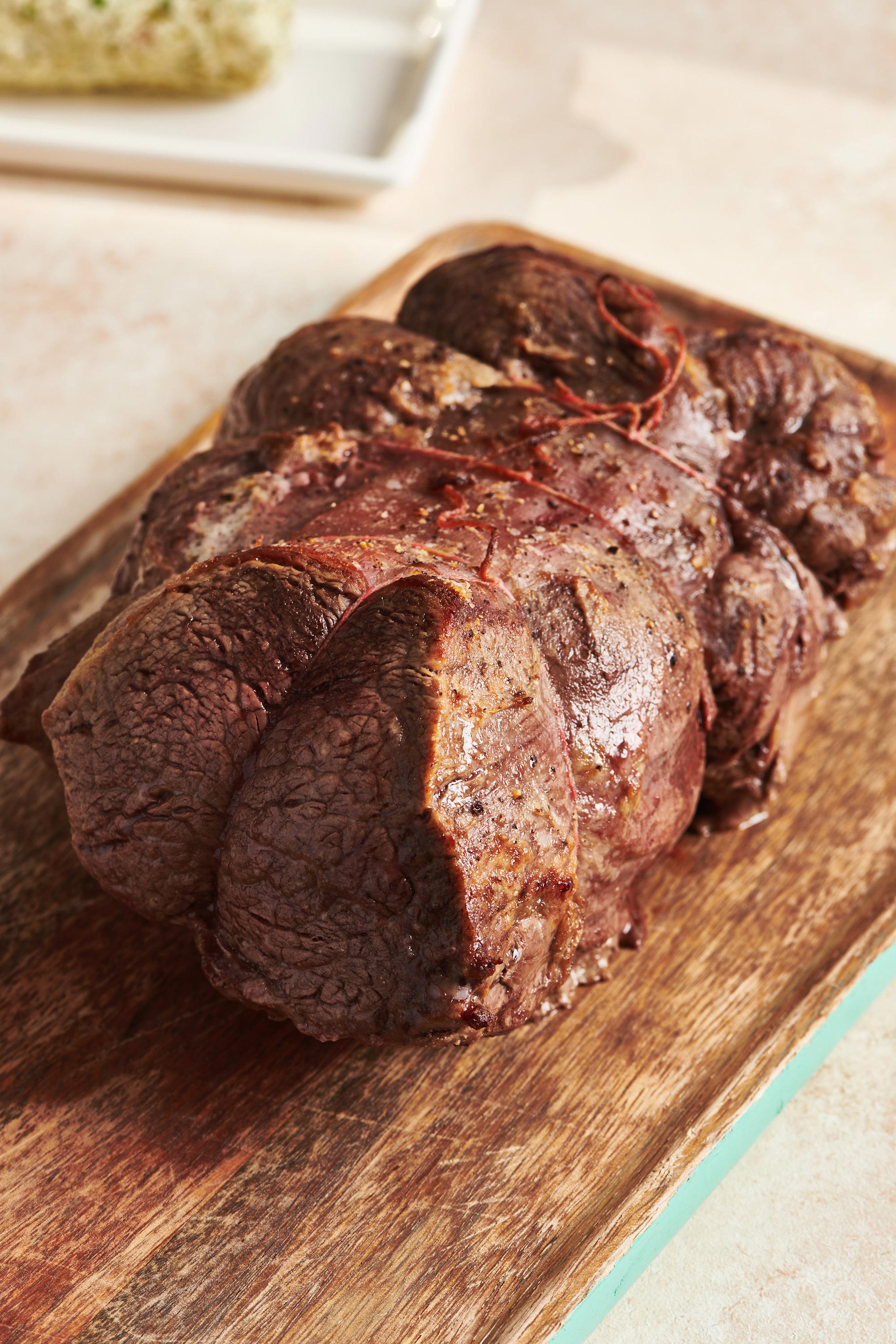
Beef Tenderloin Temperature and Doneness
If you want rare beef, you’ll want to pull it from the oven when the internal temperature reading is 120 degrees on an internal or meat thermometer. For medium-rare, take it from the oven at an internal temperature of 125 degrees. Medium is 135 degrees, and you probably don’t want to cook it longer than that. If people at your table like it more well done, save the ends of the filet for them.
For a larger filet of beef, 5 to 6 pounds, you will need to add 5 to 8 minutes of cooking time. Use that meat thermometer!
| Desired Doneness | Internal Temperature |
|---|---|
| Rare | 120 F |
| Medium-Rare | 125 F |
| Medium | 135 F |
What to Serve With Beef Tenderloin Roast
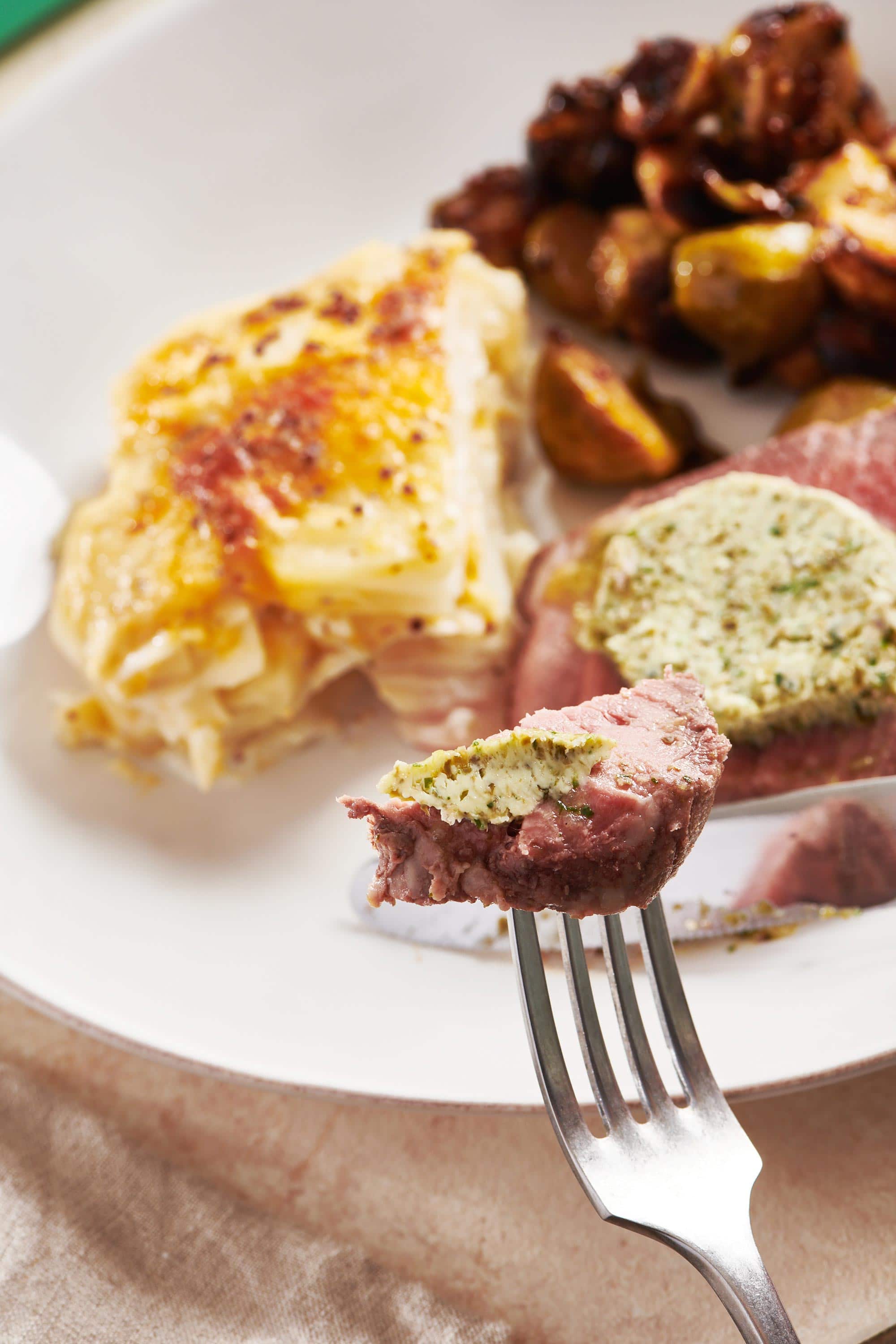
More Beef Tenderloin Recipes
- How to Cook Filet Mignon
- Filet Mignon with Creamy Parmesan Mustard Sauce
- Filet Mignon with Roasted Brussels Sprouts and Lemon-Herb Mayo
- Filet Mignon with Pistou and Green Salad
Pin this now to find it later
Pin It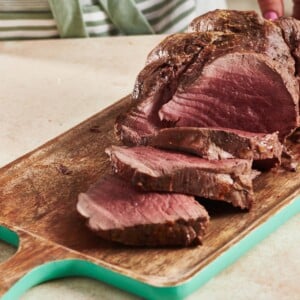
Beef Tenderloin Roast
Equipment
Ingredients
For the Tarragon Caper Compound Butter
- 2 tablespoons capers (patted dry)
- 1 shallot (roughly chopped)
- 1 tablespoon chopped chives
- 2 teaspoons chopped tarragon
- ½ cup (1 stick) unsalted butter (at room temperature)
- ½ teaspoon freshly ground black pepper
For the Beef Tenderloin
- 1 beef tenderloin (3 to 3 ½ pounds; tied
- 2 tablespoon unsalted butter (at room temperature)
- 2 teaspoons kosher salt
- 1 teaspoon coarsely ground black pepper
Instructions
- Make the compound butter: Place the capers, shallot, chives, tarragon, 1/2 cup butter, and pepper in the bowl of a small food processor and process until well blended.
- Scrape the butter out on the center of a piece of plastic wrap, and use the plastic wrap to form the butter into a 4-inch long log about 2 inches in diameter. Wrap it well, and refrigerate for at least 2 hours and up to 5 days.
- To cook the tenderloin, preheat the oven to 475 F. Pat the beef dry with paper towels and place it on a rimmed baking sheet. Rub the 2 tablespoons of butter all over the meat, and evenly sprinkle the salt and pepper over the surface.
- Place the beef in the oven and roast for about 23 to 25 minutes for rare (an internal temp of 120 F), and 27 to 30 minutes for medium-rare (an internal temp of 125 F), depending on the thickness of the meat. Let the meat sit on a cutting board, tented with foil, for 20 minutes before slicing it into thick slices (or thin, your call!). Remove the compound butter from the fridge while the meat rests.
- Place a slice of the compound butter on top of the warm slices of meat as you serve them.
